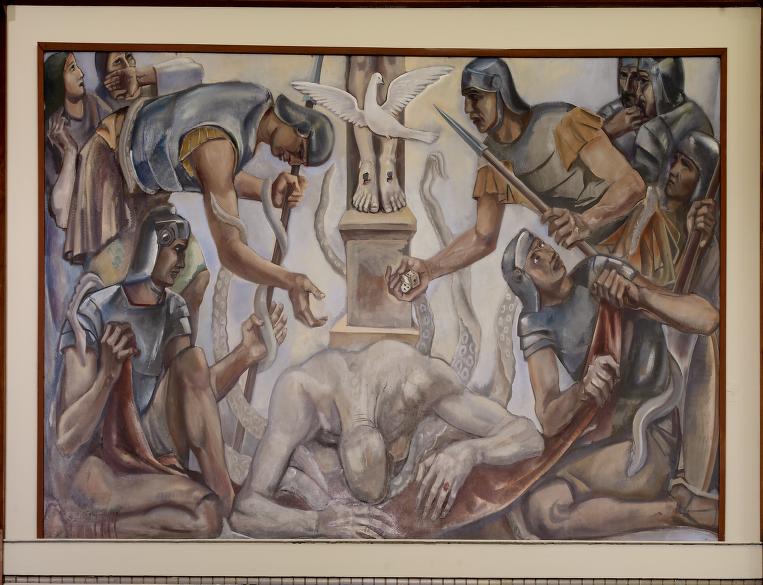This blog post was written by Maryann Hasso, a cohort member of the New Perspectives on Primary Sources (NPPS) Project.
My students read the poems “Avarice” by Yusef Komunyakaa, “The Good Life” by Tracy K. Smith, and “Money” by Reginald Gibbons from our textbook My Perspectives: California English Language Arts Grade 10, in Unit 4, “All That Glitters” (Savvas Learning Company, 2021). It is a collection of relevant poems for the intended audience of English language learning students (ELLs). Moreover, the poems are written by people from various cultural backgrounds. This shows how poetry can be a powerful tool when using research-based strategies supporting ELLs in the classroom. For this post, I will share examples of how we worked with each of these poems.
We began by doing a cold read of each of the three poems. Then, over the next few class sessions, we worked to build background knowledge and do a deeper dive into each of the poems.
One way to do that was to find visual representations of the keywords or themes from all three of the poems, in both historical and contemporary images. As a class, we brainstormed and recorded terms, themes, and vocabulary words that came to mind as we read the three poems. Our class listed avarice, money, poverty, greed, and good life. The next step was to find photos or images that would help lead to a deeper understanding of the poem and maybe even the poet. While students know where to find contemporary images, they might not know about how to look for images using the repository of the Library of Congress. We reviewed this tutorial from the Library of Congress on “Finding Primary Sources.”
For the poem “Avarice,” we first needed to get a working definition. We consulted the Merriam-Webster dictionary to review the definition of “avarice.” It is defined as “excessive or insatiable desire for wealth or gain: greediness, cupidity.” After a class discussion and exploring on the Library of Congress site, we found this piece illustrating greed. We talked about what we saw in the visual piece and what we also saw in the poem “Avarice.”
Throughout the lesson, I facilitated the students’ analysis of the document by presenting images of “avarice” from the LOC, specifically selecting Vulture Capitalism (https://www.loc.gov/item/2003668481/) and Desperate Conflict in a Barn (https://www.loc.gov/item/2002698206/). These visuals aimed to evoke connections with the characters featured in the poems.
Another activity we engaged in using one of our featured poems was guided annotation. We did this when considering “The Good Life” and explored the transcript “Tracy K. Smith Art Works Podcast: A Conversation with Tracy K. Smith about Poetry, History, Memory, and Wonder.” This helped to give students background knowledge of the poem and context as they engaged with the text. We ended this session by writing, individually, about what the “good life” means to each of us.
For the last poem in our collection, “Money,” we again read the poem as a class. This time, we looked to aid comprehension and further explain what door-to-door salespeople were like. We did that using this resource from the Library of Congress, a how-to manual from 1905.
With this additional knowledge for each of the poems, we re-read each of them again and had another discussion, gauging how their comprehension and understanding had changed from the original cold reads. I hope that your students also find that using and exploring artifacts from the Library of Congress can help to provide historical perspectives to students and deepen students’ experiences with their texts. The Library of Congress is a valuable repository of diverse and enduring knowledge, readily accessible to both newcomers and experienced researchers, with a dedicated staff available for online and in-person assistance.
 Maryann Hasso is an accomplished high school and college English teacher with over 15 years of experience in teaching students from a broad array of educational backgrounds and skill levels. She’s very skilled at teaching English learners and applying the strategies she has researched within the classroom. Her research interests include English learner instructional strategies, assessment bias, and professional development for English learner teachers.
Maryann Hasso is an accomplished high school and college English teacher with over 15 years of experience in teaching students from a broad array of educational backgrounds and skill levels. She’s very skilled at teaching English learners and applying the strategies she has researched within the classroom. Her research interests include English learner instructional strategies, assessment bias, and professional development for English learner teachers.
Curious about the NCTE and Library of Congress connection? Through a grant announced by NCTE Executive Director Emily Kirkpatrick, NCTE is engaged in ongoing work with the Library of Congress and “will connect the ELA community with the Library of Congress to expand the use of primary sources in teaching.” Stay tuned for more throughout the year!
It is the policy of NCTE in all publications, including the Literacy & NCTE blog, to provide a forum for the open discussion of ideas concerning the content and the teaching of English and the language arts. Publicity accorded to any particular point of view does not imply endorsement by the Executive Committee, the Board of Directors, or the membership at large, except in announcements of policy, where such endorsement is clearly specified.

